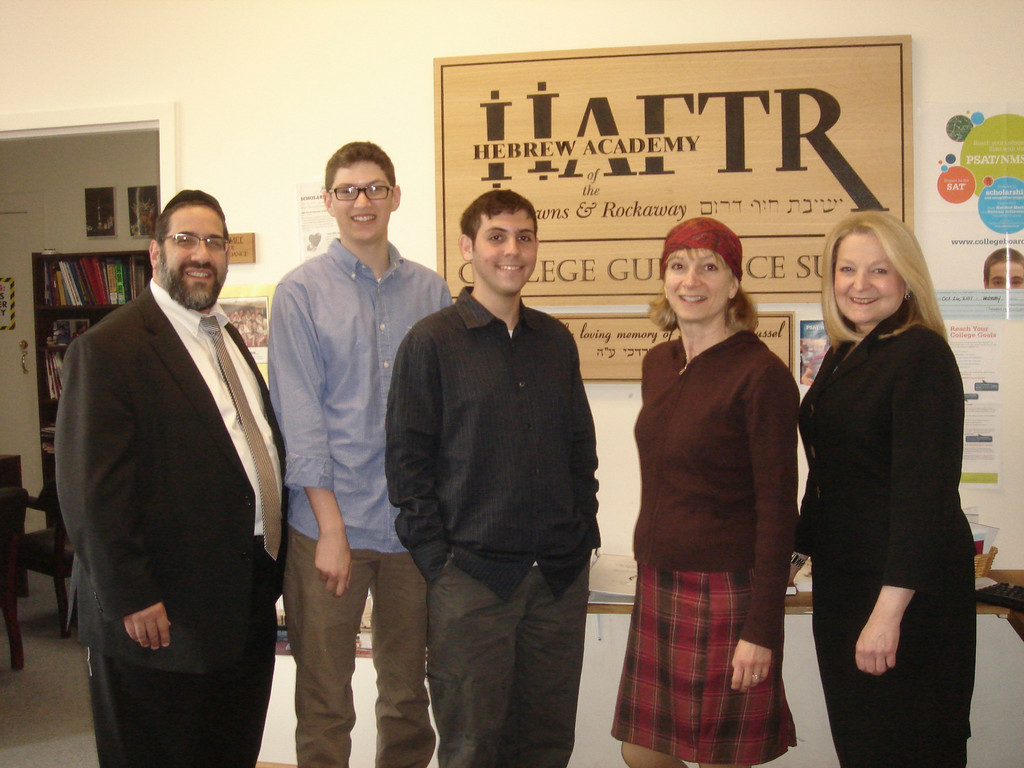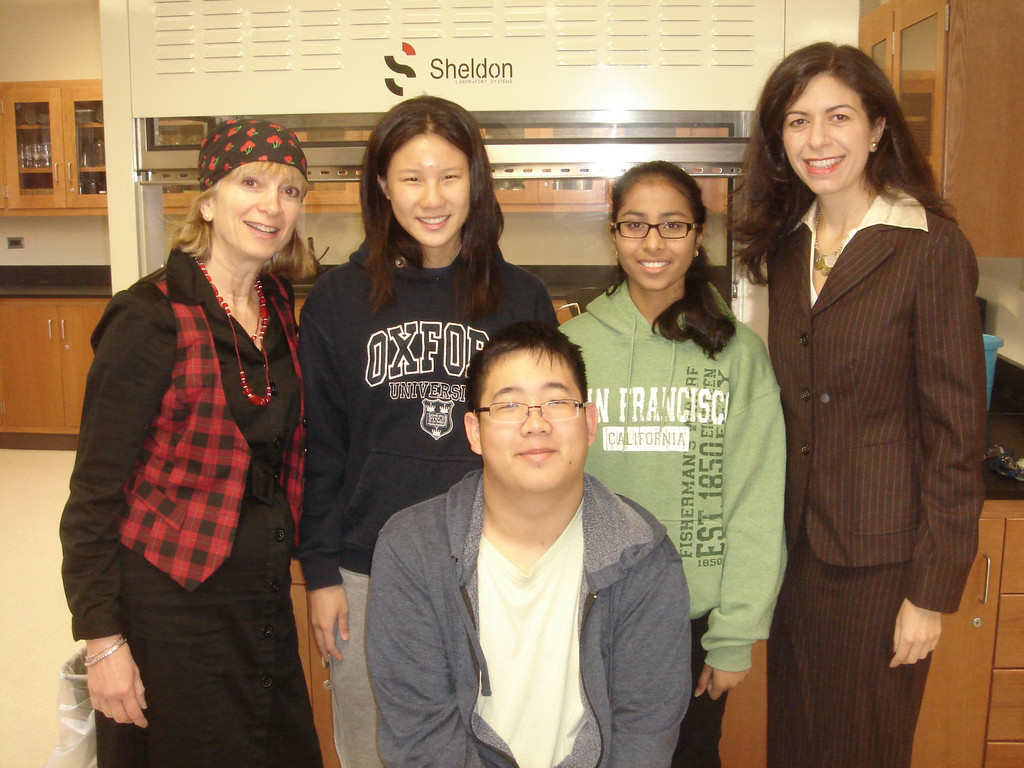Research to help the world
Five Towns students are named Siemens semifinalists
Two groups of students from Lawrence and the Hebrew Academy of the Five Towns, using identical substances for different purposes, were named semifinalists in the 2011 Siemens Competition in Math, Science & Technology on Oct. 21.
Lawrence High School juniors Andrew Chen, Alexandra Tse and Sneha Chittabathini worked on a research project that could improve the efficiency of solar panels. They focused on combining oxygen with graphene — single-layer sheets of carbon atoms — to produce graphene oxide, which would help solar cells convert more sunlight into energy.
“We are running out of gas, there is a lack of energy and we are looking for a renewable, clean way to make energy, and solar energy is the biggest renewable source,” said Chen, explaining what spurred his interest in the project, titled, “Incorporating Graphene Oxide and Graphene into Polymer Layers of Organic Solar Cells.”
Wade Miller and Eric Hirsch, seniors at HAFTR, studied the application of graphene and graphene oxide as a potential substitute for stem cells when body tissue needs to be replaced. Currently, stem cells are taken from the patient’s body, which is an expensive and invasive procedure.
“The two components graphene and graphene oxide are very interesting, and putting them together is the perfect opportunity for research,” said Miller, who will be applying to the University of Pennsylvania and plans to study the topic further. His project with Hirsch is titled, “The Growth and Differentiation of Dental Pulp Stem Cells Plated on Polymer Scaffolds Containing Graphene and Graphene Oxide.”
It incorporated and attempted to extend the research of former Lawrence student Paul Masih Das, who discovered a new method of making graphene that is in the process of being patented. Das was a 2010 Intel Science Competition finalist.
Both groups of students worked under the guidance of Rebecca Isseroff, the science research coordinator for both high schools, and were directed in their research by Dr. Miriam Rafailovich of Stony Brook University.
The students worked through the summer with other high school and college students as well as with scientists, conducting the experiments that comprised their research. “Just the experience of meeting all new people, professors, undergrad and graduate students and high school students like myself,” said Tse, explaining what she enjoyed about being part of this project. It was a highly collaborative environment in which everyone put together the day’s research game plan, then saw the results, she added.
The students worked from 8 a.m. to 8 p.m. on weekdays throughout the summer, and had the choice of living on Stony Brook’s campus or commuting. Chen, Tse, Miller and Hirsch lived in a dorm, and Chittabathini commuted.
“I was excited by the research. We didn’t have much to go on so it was exciting when we got results,” Chittabathini said, noting the education they received in lab safety and seeing all the high-tech scientific equipment.
An interest in biomedicine prompted Hirsch’s involvement, and as he moves on to college, his curiosity about research and medicine could combine into a future career. “Research is very difficult, but very rewarding,” he said in explaining what he learned from his participation. “It is a very collaborative effort with different people in different areas of science.” Hirsch has yet to narrow down his college choices.
The Siemens Competition, the nation’s leading research competition in math, science and technology for high school students, is administered annually by the College Board, and awards college scholarships ranging from $1,000 to $100,000 in individual and team categories. An all-time record of 2,436 students registered to enter the 2011-12 competition, submitting an unprecedented 1,541 projects.
Though neither the Lawrence nor HAFTR students were among the four regional finalists from Long Island who will present their research with peers from across the nation, all five said they learned much from the experience, and Isseroff noted that this is just the beginning. “There are a lot of exciting applications to their research,” she said.
The competition’s regional finals begin Nov. 4. The winners are invited to compete at the national finals at George Washington University in Washington, D.C., Dec. 3-5.









